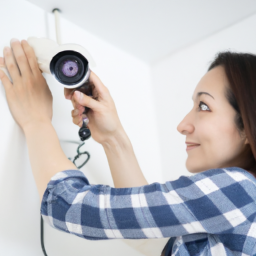Hardwired vs. Wireless Systems
Home security systems can be either hardwired or wireless, depending on your preference and the existing infrastructure in your home. If your home already has wiring from a previous alarm system, a hardwired system can be easily installed. However, if you’re installing a security system for the first time and there’s no existing wiring, a wireless system may be a better option, as it won’t require drilling holes or disrupting your home’s layout. Hardwired systems operate on switching circuits and don’t rely on batteries or radio signals, making them more secure against tech-savvy criminals. However, it’s important to hide the wiring well to prevent tampering.
The majority of wireless security systems are operated using remote control fobs, thereby eliminating the need for codes. These systems are not tethered to a central control panel by wires, making it easy to integrate other structures, such as garages and sheds, into the security network. Since wireless systems rely on batteries for power, it’s important to regularly check each sensor to ensure that the batteries are still functioning properly. Many systems feature warning signals that alert the homeowner when battery power is running low.

Components of a Security System
A home security system typically comprises some or all of the following components:
- Control panels: The nerve center of the system, usually located in a discreet spot like a closet or garage. It’s the primary power source and connects to other components.
- Security keypads: A keypad located near the front entrance allows you to enter your code upon entering your home. This is typically found in hardwired systems.
- Motion detectors: Installed near doors and windows, these detect changes in infrared energy levels or ultrasonic sound wave patterns, alerting you to potential intruders.
- Door and window contacts: Installed on doors and windows, these trigger the alarm when a door or window is opened.
- Glass sensors: Installed on glass window panes, these detect broken glass and trigger the alarm.
- Sirens: These alert the neighbors and scare off intruders. They can be in the form of horns, strobe lights, or a combination of attention-grabbing sights and sounds.
- Signs and stickers: Posted around the home, these serve as a deterrent to potential intruders, warning them that the home is equipped with a security system.